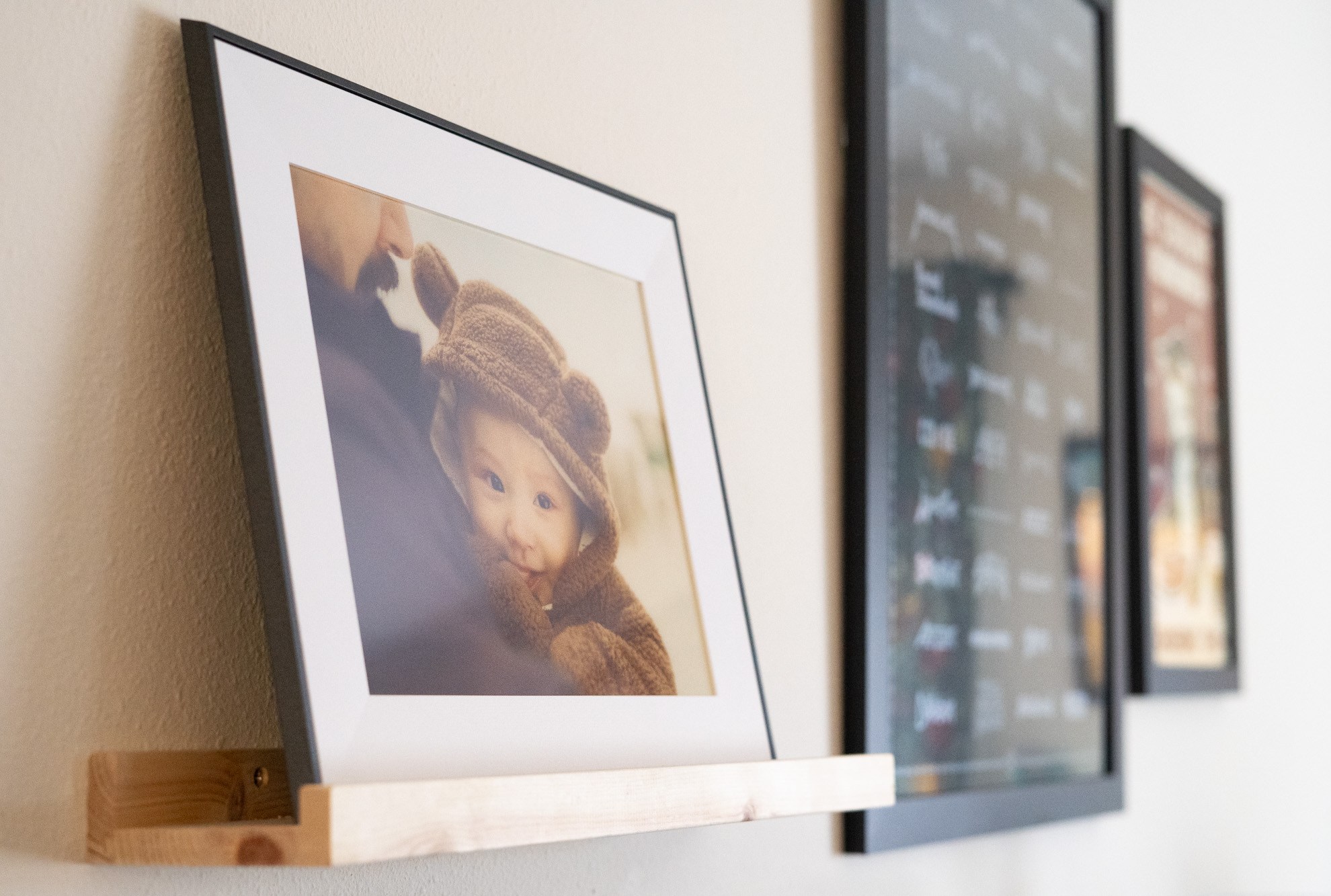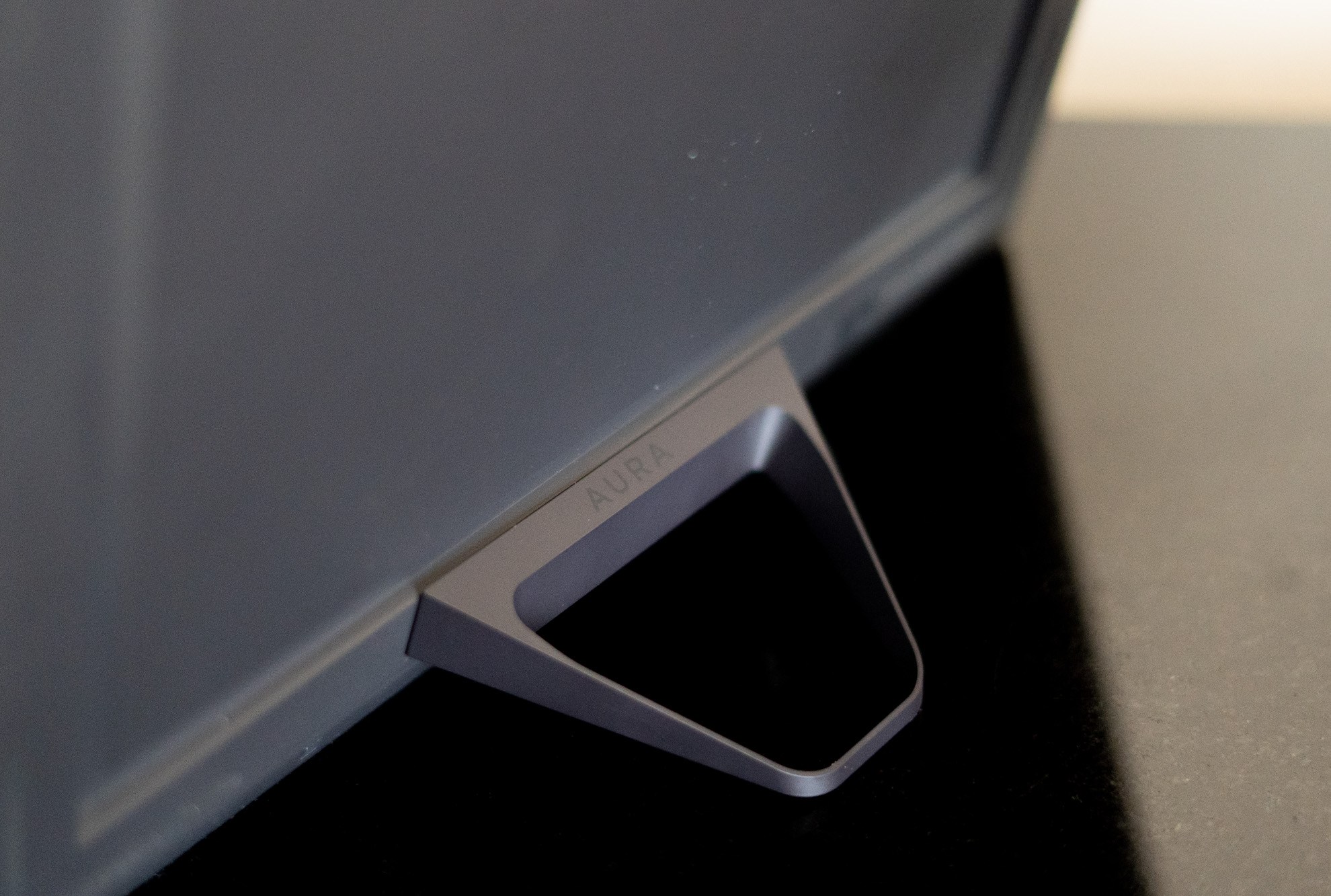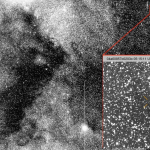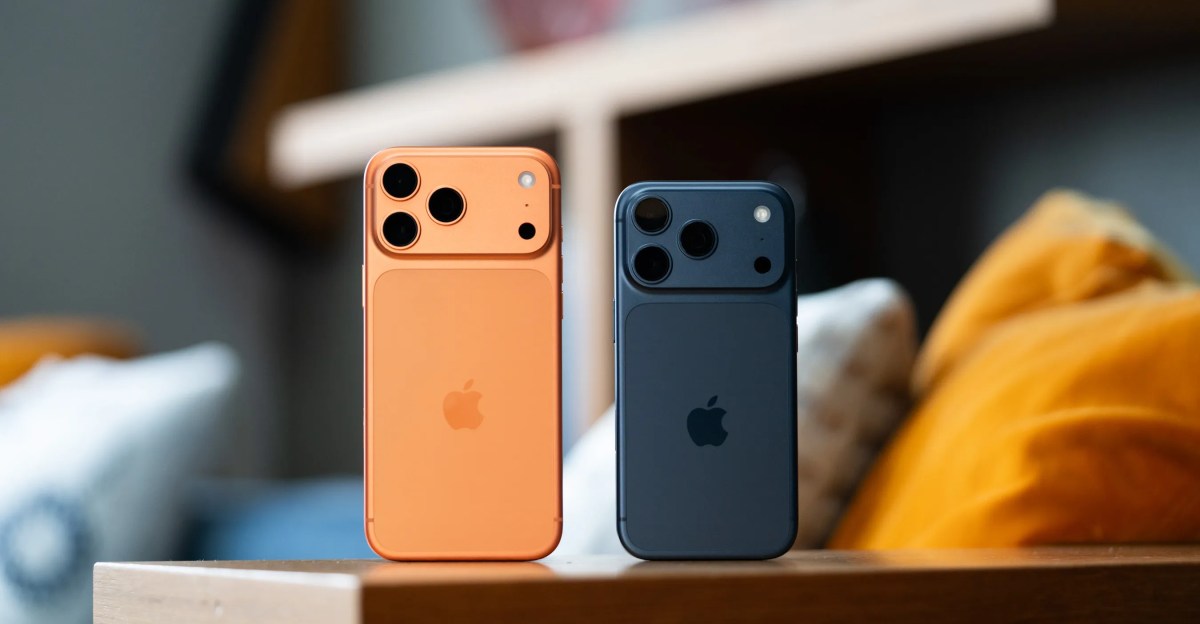Aura, maker of digital photo frames beloved by grandparents everywhere, is introducing its first frame with a color E Ink display.
The Aura Ink uses a 13.3-inch E Ink Spectra 6 panel and is designed to live on your wall for months at a time before it needs a recharge. I’ve been testing one for the past week on my own wall, where it has mostly displayed family photos that were otherwise relegated to Google Photos albums, and that has been genuinely delightful. It’s a tempting concept for anyone with an aversion to Too Many Cords, but this first-gen product comes with a steep first-gen price: $499, which is $200 higher than the next-priciest frame in Aura’s lineup.
Making an E Ink frame that could live cord-free on the wall has been a goal for Aura’s cofounder and CTO Eric Jensen for nearly a decade, but the technology hasn’t been there. The LCD panels in Aura’s current frames display photos in vivid color, but they draw too much power to be used for long without a cord. “A backlit LCD is just nowhere close to being able to hang on your wall and stay alive for months,” he tells The Verge in an interview.
E Ink offers the kind of battery life they were looking for, but until now, it hasn’t been capable of displaying photos realistically. Jensen says that the dream of a cordless frame finally became possible with E Ink’s Spectra 6 display tech. “It’s the first one that’s capable of really showing home photos, normal photos like we all have sitting in our camera rolls.”
The panel in the Ink frame can only technically display six colors: white, black, red, yellow, green, and blue. When you display a photo on the screen, electrically charged particles are arranged to mimic the colors of your photo — basically the same thing as the tiny dots arranged to create color images in a newspaper.
There’s no backlight on this display, unlike an LCD, though it uses a subtle front light to give the image a little pop — Jensen says testers reported photos were too dim without it. I didn’t even realize it was there until I went looking for it; if you cup your hand over the edges of the image, you can see the glow, but otherwise it’s extremely subtle. There’s a motion sensor embedded in the frame’s white “mat,” which turns the front light off to conserve power at night or if nobody’s around.
The Ink will, by default, display a new photo once a day, changing overnight. This is partly to conserve battery, but also likely because there’s a lot of flickering over the course of 30 seconds as it switches to a new image. It’s not bright; it just looks a little alarming to see your adorable baby’s eyes flashing as the colors settle into place. You can have it rotate automatically up to six times a day, and you can press one of the physical controls on the top of the frame to advance the image or go back to the previous one.
I chose the highest automatic refresh option, and I’ve been flipping to a new photo frequently throughout the day. I’ve barely put a dent in the battery. It’s at 92 percent after four days of stress-testing it. Aura’s estimated three months of battery life with one daily refresh seems entirely reasonable, and I doubt you’d have to recharge within a month if you opted to change the photo more frequently than that. Aura includes a super long USB-C cable with the frame — almost 10 feet by my measurement. The port is accessible even when the frame is on the wall, so you can most likely plug it into an outlet without moving the frame when it’s time to charge. A couple of nails are included for wall mounting, as well as a stand if you’d rather set it on a table — though at 11.5 x 14 inches, it’s a sizable addition to a side table.
Like Aura’s other frames, the main way to interact with the display is through the app — and it’s a good one. This is where you upload photos, adjust settings, and even like and comment on photos someone has added. Aura includes unlimited free photo storage with its frames, and Jensen swears to me that the company will never put its “core features” behind a paid subscription. That’s a relief.
Certain types of images play better on the E Ink screen than others
Jensen also tells me that Aura is an unusual E Ink customer. The Spectra 6 display is geared mostly toward retailers and advertisers, so the company worked to tweak the tech to its purposes. It’s no small challenge; most people will want to display photos taken with their phones on the frame, and those images are optimized for bright, high-dynamic-range displays. Aura has to translate them to a screen that’s only working with a palette of six colors and has no backlight. Given the constraints, I think they’ve done a good job, though certain types of images play better on the E Ink screen than others.
Aura suggests choosing photos that are bright with good contrast. I found that my photos with a lot of blue in them — sky, water, etc. — look great. Some of our wedding reception photos with a softer, lower-contrast style come across as washed-out on the Ink frame, though. Skin tones are tricky, too. Pictures of me and my kid, the pastier members of the family, sometimes have a slight green cast. Portraits taken outdoors with plenty of even lighting look much more balanced. Standing close to the frame, you can clearly see the individual dots making up the photo, but from across the room, the blurring effect that distance has on the tiny colored dots could definitely fool me into thinking I was looking at a framed print.
I’ve been reviewing consumer tech for over a decade, and I can comfortably say it’s unusual to see one company dominate a product category the way Aura has. Check any website with a roundup of the best digital photo frames, and I guarantee you’ll see an Aura frame at the top of the list. I bought one for my parents when my son was born, and it was such a hit that my husband bought one for his mom the following year. Every once in a while, someone in a parent-oriented Slack channel or group chat I’m in will ask for digital photo frame recommendations; about 10 people will reply with “just get an Aura.” It’s that good.
The thing is, I haven’t really considered getting one myself. I don’t love the idea of another glowing screen in the house — however subtle and pleasant it might be — and I hate extra cords lying around. I keep telling myself that one day, I’ll print some family photos and put them on the wall the old-fashioned way, but I’ve done that exactly zero times in the last four years.
Refreshingly low-tech and pretty convincing as a substitute for a printed photo
The Ink is just the kind of frame I’d be interested in. It’s refreshingly low-tech and pretty convincing as a substitute for a printed photo. But $500 is a steep price to pay for all that; I could send off half a dozen pictures, get them printed, framed, and shipped to my house for that price. And while E Ink’s color technology is impressive, it still leaves some photos looking a little flat. Jensen calls it “definitely a first-generation price point,” and mentions that Aura’s first frame cost $399. That particular model has been discontinued since then, but for comparison, the Aspen frame announced earlier this year costs $229.
It all comes down to your price tolerance and appetite for being an early adopter. For the grandmas and grandpas out there who just want a 24/7 slideshow of the grandkids in their living room, Aura’s regular LCD frames are still the best option. The Ink feels like it’s pitched more toward parents who want to get photos off their phones but don’t really want another gadget around the house. If you fit that description and you don’t mind the first-generation-ness of it all, the Ink frame will feel right at home, well, in your home. The rest of us should probably wait a generation or two — and maybe print some actual photos in the meantime.
First Appeared on
Source link
















